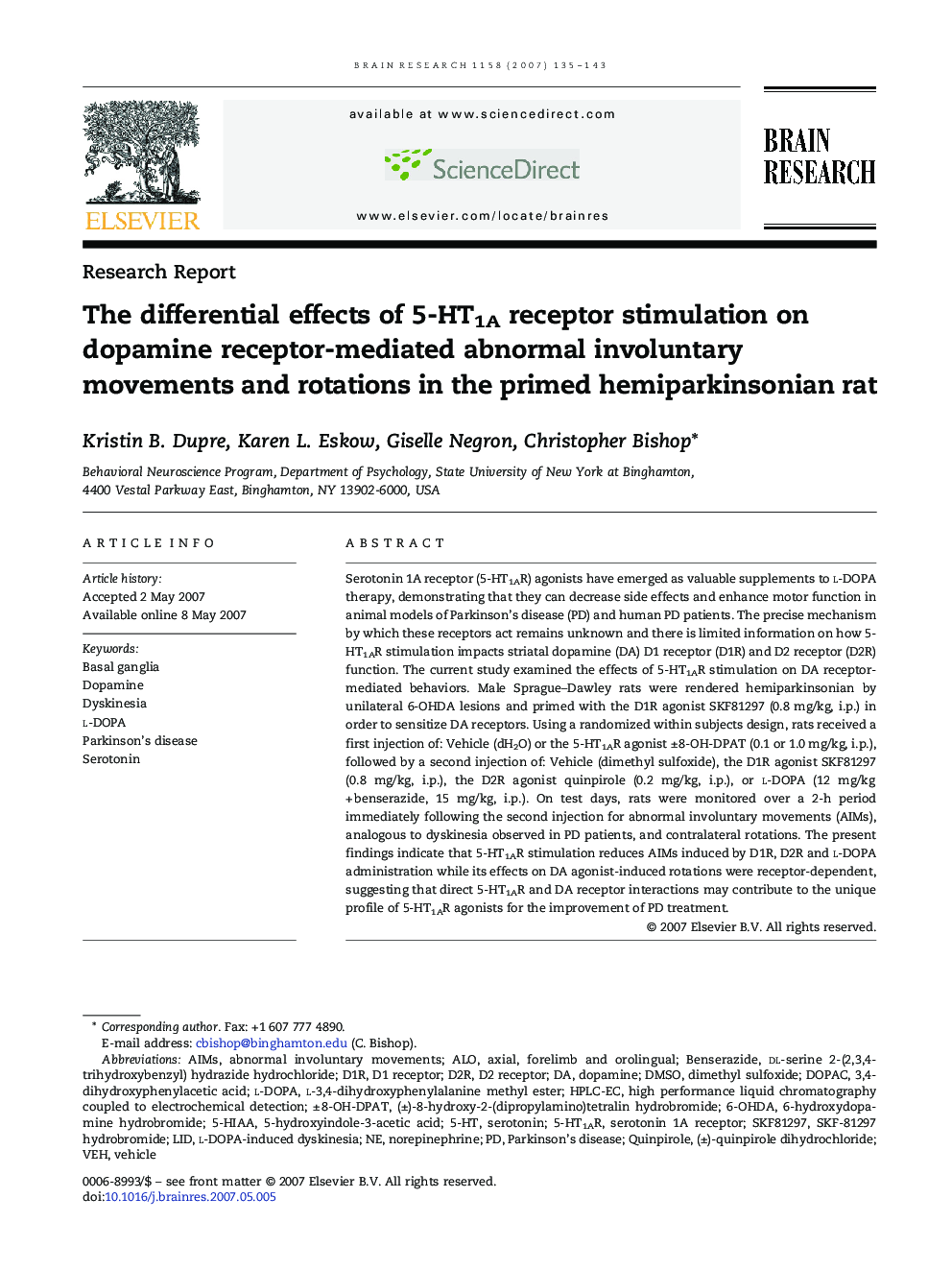| Article ID | Journal | Published Year | Pages | File Type |
|---|---|---|---|---|
| 4330924 | Brain Research | 2007 | 9 Pages |
Serotonin 1A receptor (5-HT1AR) agonists have emerged as valuable supplements to l-DOPA therapy, demonstrating that they can decrease side effects and enhance motor function in animal models of Parkinson’s disease (PD) and human PD patients. The precise mechanism by which these receptors act remains unknown and there is limited information on how 5-HT1AR stimulation impacts striatal dopamine (DA) D1 receptor (D1R) and D2 receptor (D2R) function. The current study examined the effects of 5-HT1AR stimulation on DA receptor-mediated behaviors. Male Sprague–Dawley rats were rendered hemiparkinsonian by unilateral 6-OHDA lesions and primed with the D1R agonist SKF81297 (0.8 mg/kg, i.p.) in order to sensitize DA receptors. Using a randomized within subjects design, rats received a first injection of: Vehicle (dH2O) or the 5-HT1AR agonist ± 8-OH-DPAT (0.1 or 1.0 mg/kg, i.p.), followed by a second injection of: Vehicle (dimethyl sulfoxide), the D1R agonist SKF81297 (0.8 mg/kg, i.p.), the D2R agonist quinpirole (0.2 mg/kg, i.p.), or l-DOPA (12 mg/kg + benserazide, 15 mg/kg, i.p.). On test days, rats were monitored over a 2-h period immediately following the second injection for abnormal involuntary movements (AIMs), analogous to dyskinesia observed in PD patients, and contralateral rotations. The present findings indicate that 5-HT1AR stimulation reduces AIMs induced by D1R, D2R and l-DOPA administration while its effects on DA agonist-induced rotations were receptor-dependent, suggesting that direct 5-HT1AR and DA receptor interactions may contribute to the unique profile of 5-HT1AR agonists for the improvement of PD treatment.
